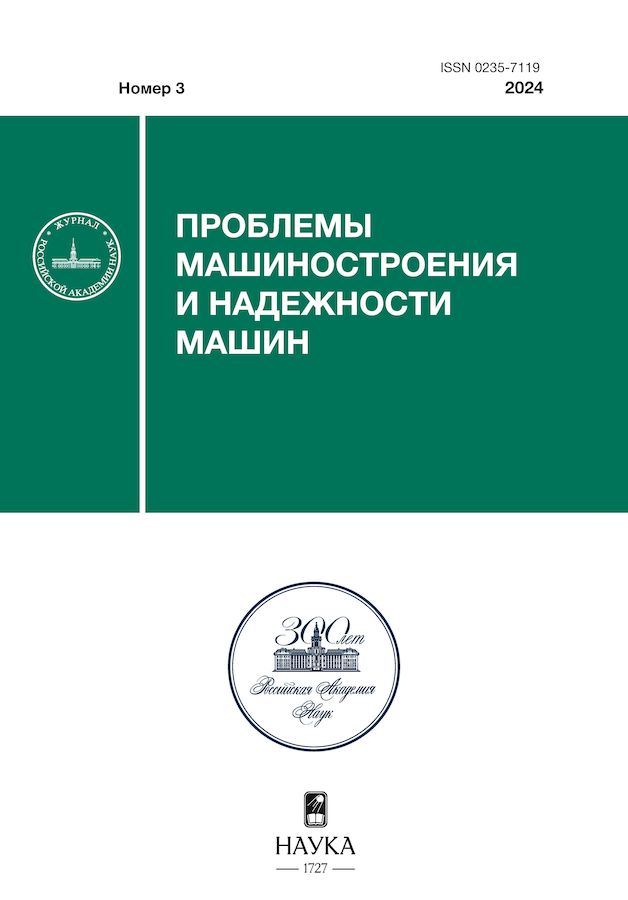Нетипичное упрочнение, вызванное током и пластической деформацией
- 作者: Столяров В.В.1
-
隶属关系:
- Институт машиноведения РАН им. А. А. Благонравова
- 期: 编号 3 (2024)
- 页面: 14-20
- 栏目: НАДЕЖНОСТЬ, ПРОЧНОСТЬ, ИЗНОСОСТОЙКОСТЬ МАШИН И КОНСТРУКЦИЙ
- URL: https://edgccjournal.org/0235-7119/article/view/675571
- DOI: https://doi.org/10.31857/S0235711924030033
- EDN: https://elibrary.ru/PHIDGG
- ID: 675571
如何引用文章
详细
На основе литературных и экспериментальных данных кратко рассмотрены эффекты, сопровождающие прохождение импульсного тока и связанные с ними структурные изменения в металлах и сплавах. Показана особая роль вида и режимов тока, а также природы материала. Представлены результаты проведенных исследований взаимодействия электрического тока и пластической деформации квазистатическим растяжением в чистых металлах, титановых сплавах с мартенситным превращением, сталях. Предполагается, что причинами обнаруженных деформационных эффектов являются соотношение периода и длительности импульса, циклирование напряжений и температуры, изменение механизма деформации, обратимые превращения, изменение размера зерен, появление частиц вторых фаз. Вариация скважности позволяет регулировать соотношение теплового и электропластического эффекта и тем самым влиять на механизмы упрочнения/разупрочнения.
关键词
全文:
作者简介
В. Столяров
Институт машиноведения РАН им. А. А. Благонравова
编辑信件的主要联系方式.
Email: vlstol@mail.ru
俄罗斯联邦, Москва
参考
- Troitskii O. A. Electromechanical effect in metals // JETP Letters. 1969. № 1. P. 18.
- Golovin Yu. I. Magnetoplastic effect in solids // Physics of the Solid State. 2004. V. 46 (5). P. 789.
- Liu J., Jia D., Fu Y., Kong X., Lv Z., Zeng E., Gao Q. Electroplasticity effects: from mechanism to application // Int. J. of Advanced Manufacturing Technology. 2023. https://doi.org/10.1007/s00170-023-12072-y
- Perkins T. A., Kronenberger T. J., Roth J. T. Metallic forging using electrical flow as an alternative to warm/hot working // J. of Manufact. Sci. Eng. 2007. V. 129. P. 84.
- Chun X. U., Ya-Nan L.I., Rao X. H. Effect of electropulsing rolling on mechanical properties and microstructure of AZ31 magnesium alloy // Transactions of Nonferrous Metals Society of China. 2014. V. 24. P. 3777.
- Zhou Y., Chen G. Q., Fu X. S., Zhou W. L. Effect of electropulsing on deformation behavior of Ti-6Al-4V alloy during cold drawing // Transactions of Nonferrous Metals Society of China. 2014. V. 24. P. 1012.
- Lee T., Magargee J., Ng M. K., Cao J. Constitutive analysis of electrically assisted tensile deformation of CP-Ti based on non-uniform thermal expansion, plastic softening and dynamic strain aging // Inter. J. of Plasticity. 2017. V. 94. P. 44.
- Okazaki K., Kagawa M., Conrad H. Additional results on the electroplastic effect in metals // Scr. Metall. 1979. V. 13. P. 277.
- Okazaki K., Kagawa M., Conrad H. An evaluation of the contributions of skin, pinch and heating effects to the electroplastic effect in titanium // Mater. Sci. Eng. 1980. V. 45. P. 109.
- Rudolf C., Goswami R., Kang W., Thomas J. Effects of electric current on the plastic deformation behavior of pure copper, iron, and titanium // Act. Mater. 2021. V. 209. 116776.
- Stolyarov V. Deformation behavior at rolling and tension under current in TiNi alloy // Conf. ESOMAT. 2009. 06033.
- Zhao S., Zhang R., Chong Y. et al. Defect reconfiguration in a Ti–Al alloy via Electroplasticity // Nat. Mater. 2021. V. 20. P. 468. https://doi.org/10.1038/s41563-020-00817-z
- Zhou Y., Zhang W., Wang B., He G., Guo J. Grain refinement and formation of ultrafine-grained microstructure in a low-carbon steel under electropulsing // J. Mater. Res. 2002. V. 17. P. 2105.
- Rahnama A., Qin R. S. Electropulse-induced microstructural evolution in a ferritic-pearlitic 0.14% C steel // Scr. Mater. 2015. V. 96. P. 17.
- Qin R. S., Rahnama A., Lu W. J., Zhang X. F. Elliott-Bowman B. Electropulsed steels // Materials Science and Technology. 2014.V. 3. P. 1040.
- Gennari C., Pezzato L., Simonetto E., Gobbo R., Forzan M., Calliari I. Investigation of electroplastic effect on four grades of duplex stainless steels // Materials. 2019. V. 1. P. 1911.
补充文件













